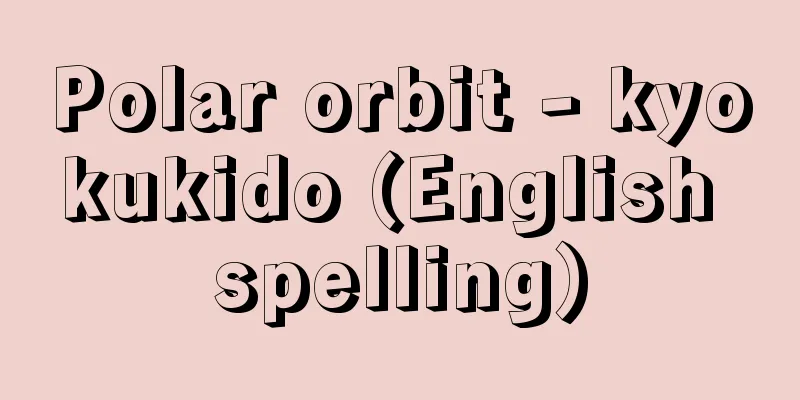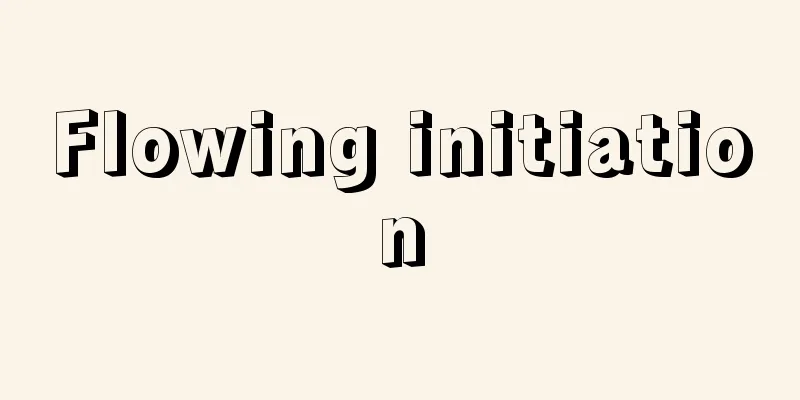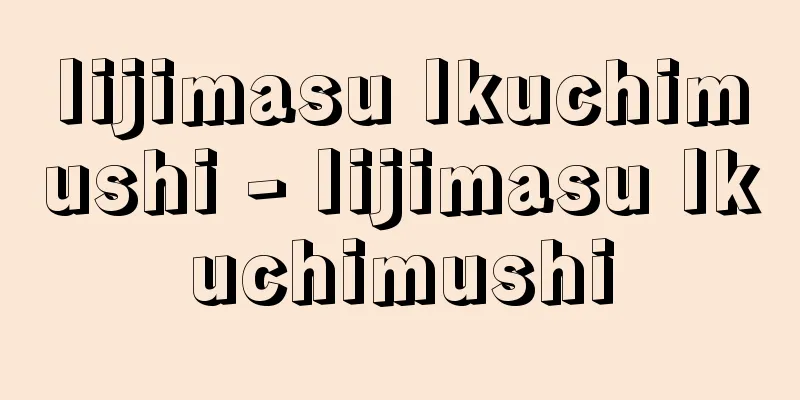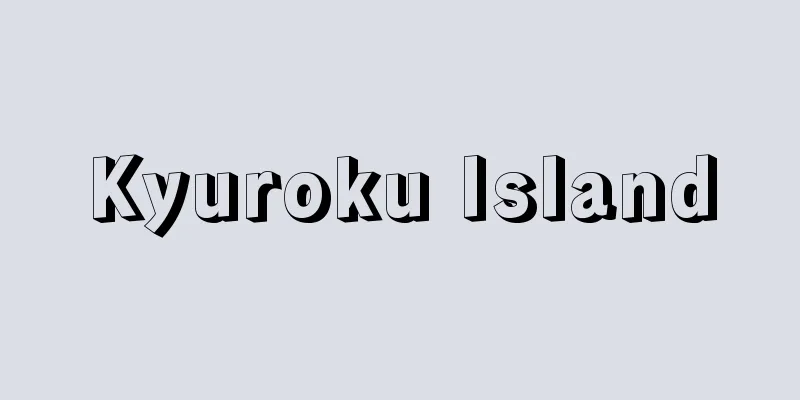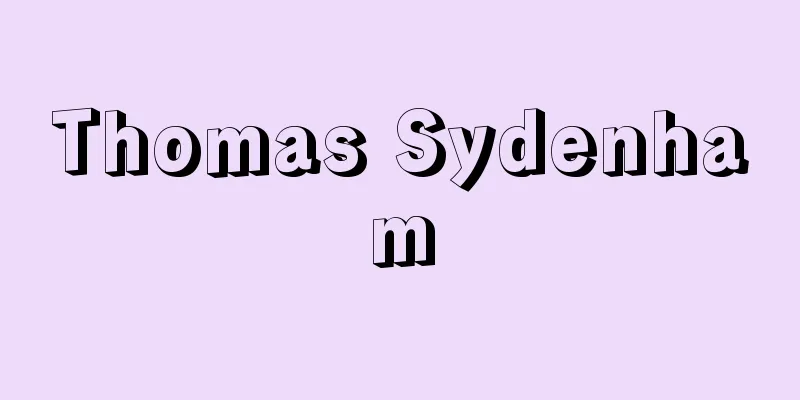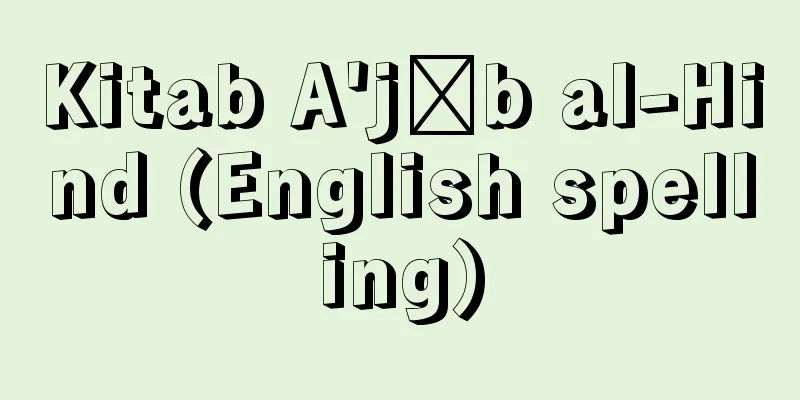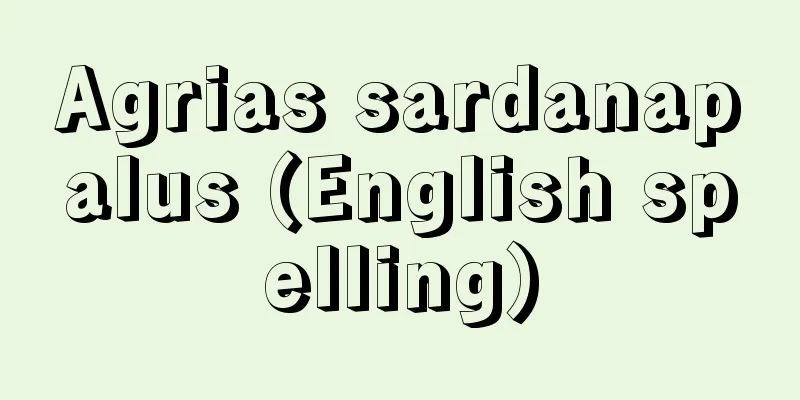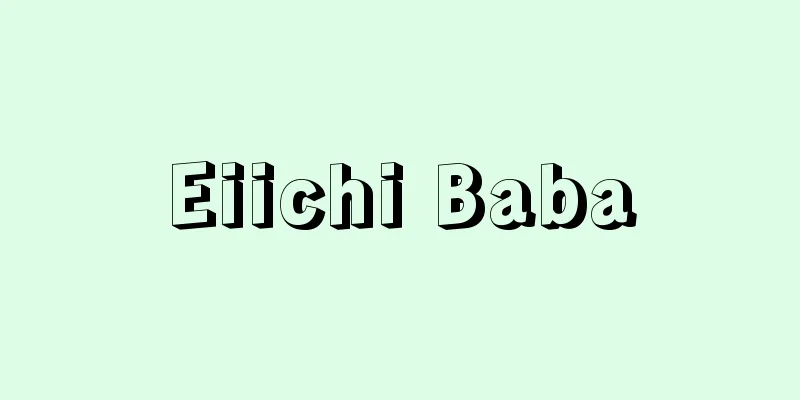Characters - Moji

|
Also known as "monji," it is a system of symbolizing language into units using combinations of dots and lines. [Kusakabe Fumio] EssenceWriting is necessary to write down words and read them. Characters are a set of graphic symbols, and are the building blocks of notation, which creates the standard for literacy. Characters are its building blocks. Language is originally a temporal sequence of phonetic symbols, but characters replace it with a spatial sequence of graphic symbols. This is notation, and it makes it possible to preserve, move, and reproduce language at a digital level. Spoken language extends in a one-dimensional line, coming and going. Each time, the selected symbol appears as a sequence of sounds that are connected back and forth. Notation is created by a string of characters that project language as a linear sequence of sounds on a two-dimensional surface. Even if a picture projects a story, it is not notation. A string of characters that corresponds to spoken language is notation. For example, Chinese numerals, such as "35,864," faithfully face each individual linguistic symbol and develop a string of characters that follows the sound sequence. However, Arabic (arithmetic) numerals cannot be determined to face the sound form or follow the sound sequence, and therefore cannot be called characters. Reading and writing are linguistic activities, and notation corresponds to language, characters to phonemes, and character strings to phonetic sequences. Arabic numerals indicate only the meaning of numbers, and do not necessarily correspond to phonetic sequences. For example, it would be problematic to write 80quatre-vingts (four twenty) in French as "eighty," but 80 is acceptable across languages. On the other hand, phonetic symbols, which indicate only sounds, while following the sounds of language, actually destroy the digital, discriminatory nature of the sound units. This is because, in an attempt to get as close as possible to the real physical and physiological sounds, they incorporate too much analog continuity into the symbols, making the discrimination function ambiguous. The constituent units of the phonetic sequence, whether words, syllables, or phonemes, are assigned to characters. Characters are written differently based on significant differences and similarities in language, whether they are syntactic, morphological, or lexical. Linguistic units are faithfully traced without omission or excess, highlighting their differences and similarities. For example, even if the phonetic value of the hane sound in modern Japanese is different from [m] [n] [ɲ] [ŋ] [N], it is written only as "n" or 'n' in the character. On the other hand, three words with the same sound [jɯ:] are written as different words: "yuu" or 'yuu' for "tie (hair)", "iu" for "say (something)", and "yû" for "evening (of the 1st)". Punctuation marks are important elements that supplement characters and unify modern notation. Unlike numbers and phonetic symbols, they faithfully follow the units of language and their arrangement. The unit of characters is the character, but the unit of notation ranges from word to sentence, and even sentences with the addition of punctuation marks. There are several ways to write characters depending on their purpose. (1) Orthography is the formal system used in daily writing, both public and private. In modern Japanese, there are three types: mixed kanji and kana, kana only, and romanized writing, but there is variation in the type and usage of kanji. (2) Phonological notation is written according to phonemes, which are units of word form. This is also the ideal form of orthography. Among many orthographies, Hangeul (Korean alphabet) is close to this. (3) Transcription is a method of transcribing foreign words so that they fit the writing system of the native language, and is essentially a matter of convenience. In the early Meiji period, the Romanization Society adopted a method of transcribing consonants based on the English system, and this was adopted in the revised edition of the Wagai Rinshusei, edited by JC Hepburn. It became widespread as the Hepburn system of romanization, but this is a transcription method geared toward English texts. There is no principle for transcription based on the sounds of Chinese characters, and there are many examples of proper nouns from various countries. (4) Transliteration allows for the replacement of the original written characters with a different type of characters, making it possible to exchange them with one another. The so-called Kunrei-shiki romanization, which was established as the Japanese transliteration method by the International Organization for Standardization (ISO) in 1989 and was preceded by a Cabinet order, is a transliteration method from kana writing that has a solid phonological foundation. The current situation in which it is uncertain whether this method will be widely adopted is an issue related to the international situation and the operation of administrative organizations. Braille is also a type of transliteration. (5) Orthoepical notation includes the Chinese 'pinyin' or 'zhuyin alphabet', which is used to indicate the standard pronunciation of words. It is useful for laying the foundation for the ethnic language that unites a nation and its people. (6) The International Phonetic Signs are used solely for the descriptive study of language sounds, and are also used in dictionaries to note the pronunciation of words, but have no bearing on the general public notation of language. Characters, along with calendars, scales, currency, and the like, are the limbs of civilization, on a par with numeral notation, and are essentially the standard of civilization that circulates among diverse ethnic cultures. However, Kana and Hangeul are unusually isolated. [Kusakabe Fumio] TypeIf we follow the typology of characters, we can trace the history of their development. We begin with word characters, then move on to alphabets. Borrowing between different languages has advanced the developmental stages of characters because it has only been a short time since the development of characters for humans. (1) consolidated writing - word writing. It has many characters. The characters are based on simple pictograms (i.e. "文"), ideograms, or their combinations, i.e. compound ideographs. Most of them are phono-semantic (i.e. "characters") formed by combining determinatives (radicals) with phonetic indicators, and sometimes phonetic complements. Recently, there has been no limit to the number of characters, as in the case of "aogu" (fan) with a hand radical and "aogu" (radium) with a metal radical and thunder. In Japan, kokuji and in Vietnam, chunom were added. Word characters are those in which each character is connected to either a word or a word component, and there are at least as many characters as there are roots. (i) One-syllable type is when a word form is formed from a one-syllable root, as in Chinese, and each character corresponds to a certain syllable. However, in the case of dragonfly (chin-rin), camel (ruo-tuo), grape (pu-tao), and glass (bo-ri), the meaning is unified only when they are spelled with two characters, because the word characters in Japanese and other languages (ii) are polysyllabic because the word forms appear polysyllabically, such as "iron" and "brush" in the reading, and "kurogane" and "brush" in the reading. Egyptian hieroglyphs and Mesopotamian cuneiform characters have polysyllabic characters. Moreover, as musical notations, they become monosyllabic characters through acrophony, and even become syllabic characters. Word characters combine ideograms and phonograms. A typical example is Chinese characters, whose basic word forms are unchanging and monosyllabic. (2) In concatenate writing, there are syllabaries and alphabets. [a] In syllabaries, first of all, there are (i) open syllabaries. There are only characters corresponding to consonants and vowels. Sometimes, as in Japanese kana, a consonant is supplemented with a vowel of your choice, as in " fuku (clothes)" or " ink ( ink )", and sometimes, as in Cretan Linear B, the remaining consonant is discarded and replaced with "patina". (patēr), mater (ii) Open-and-close type. The Hittite cuneiform and Persian scripts of ancient Asia Minor had initials (open syllables) and footnotes (closed syllables), and sometimes overlapped vowels. For example, the Hittite ethnic name Hatti was written as "ha-aT-Ti". By further repurposing syllabaries, alphabetization began, as in the katakana characters tī and feiru . (iii) Consonant type. Like Hebrew and Arabic script, Phoenician and Aramaic script, it shows only consonants. The Semitic languages written in these scripts have three consonant roots as their basic form. Although it is written in a scribble of consonants, it can be read by adding vowels to the string of characters. For example, it is written as "KTB (Kitab) (writing)". A convenient way to show vowels is to use diacritic marks. This type is called a quasi-alphabet. (iv) Vowel-coded type. Consonants are the root, and vowels are added above, below, left and right. In essence, it can be said to be a glyph. However, from the viewpoint of the way in which the characters are grouped into syllables around the consonants, it is a syllabary. This type is a type of Indian script, such as Sanskrit, Deva Nagari and Thai. [b] Alphabet. Consonants and vowels are equally independent, arranged in the phonological sequence, and realize faithful writing. (i) Linear type is a typical type in which the characters are arranged in the phonological sequence. For example, Latin alphabet (Roman alphabet) and Mongolian alphabet. (ii) Segmented type is grouped into syllables, and looks like a pseudo-syllabary. Hangeul (Korean script) is an example of this, and is an alphabet with an extremely rational design. Writing is a character string equivalent to a sequence of sounds. It started with the original spiral style and back-and-forth boostrophedon (bovine plowing), and eventually settled on vertical or horizontal writing from right to left. In other words, the layout of lines was decided, and word divisions, distinctions between large and small characters, beginning, middle and end, and even symbols and punctuation marks were born. During this time, characters went through stages from concrete to analytical abstraction (phonological arbitrariness). The characters in a string of characters face some unit of a sequence of sounds, and progressed from word characters for words, then to syllabary characters for syllables, and then to alphabet characters (each of which is a letter) corresponding to the unit sounds that make up the syllable. Although there is a difference in whether the word is lumped together or spelled out, if it is viewed as a string of characters corresponding to a word, it has shape, sound and meaning. Whether it is word characters or spelling characters, such as compound character readings, kana spelling, or spelling, the writing is determined for the word. [Kusakabe Fumio] systemSymbols attached to objects, marks such as coats of arms and decorations, knots and notches, signals such as beacons and arms, all of these have appealed to the eye since ancient times. Characters were born separately from pictures. The components of a picture follow the development of a sentence and become pictography. Examples can be seen in the characters of the Mosuo ethnic minority in China. Even if the words are divided and arranged, abstract words and grammatical terms that do not yet form a picture are left out. Characters are not completed. In addition, there was a need to record the names of places and people. This is where phonetic characters came into play. In other words, a method of borrowing the phonetic characters, that is, "karisha," was discovered, which discards the meaning of the characters from the shape, sound, and meaning of pictographs and uses the phonetic characters. In the case of the palette of King Narmer of Egypt, famous as the oldest written material, the king's name is indicated by borrowing the sounds of "fish (nar)" and "chisel (mer) (a tool)." With the development of this phonetic system, "characters" were perfected that could copy a sequence of sounds without missing anything. Also, a method of discarding the phonetic meaning of a character and borrowing its meaning, "transliteration," was developed. "Gaku" (music) was originally a pictograph of a bell, but it was used to express the joy of music, and in Egypt, the pictograph of a tropical grass was used to represent the direction "south." Character shapes were supplemented by "pictographs," which were traced shapes, with "indicative characters" and "compound characters," and many were supplemented by "phono-semantic (harmonious voices)," which were musical notes with radicals (gifu) added. Collectively, they are now called hieroglyphics, but without the addition of phonetic functions, word characters would not have begun, and they would have remained merely rebus riddles. As the wealth of agricultural city-states accumulated and the division of labor progressed, the use of writing began among priests in charge of various bookkeeping, and around the 31st century BC, the Sumerians in Mesopotamia created a form of writing. Eventually, they were scribbled on clay tablets with a stylus, and the strokes took on a wedge shape, which became known as cuneiform writing. The Sumerian "foot" (dou) was borrowed into Akkadian, and was pronounced aloud as du (for example, walk), and written in kana as tum (to carry), gub (to stand), and gin (to go). The reading of tum was abaru, the reading of gub was nazazu, and the reading of gin was araruku. It also became the kana for du. Akkadian writing had both trailing kana and furigana. The Sumerian writing is considered to be the systematic origin of the various writings currently in use. In Egyptian hieroglyphics, the outline of a long, narrow pool is the character for "ikeŠ," which also became a musical note. The combination of "池Š" and "水MW" is combined with the radical for the calendar to form the phono-semantic character "夏ŠMW". These are similar to the way Chinese characters are created and used in Japan. The ancient characters eventually fell into disuse, leaving behind descendants that went through several stages of development. Ancient characters include those from Mohenjo Daro in India, the Maya in Mexico, and the Aztecs, but these are also dead. However, Chinese characters have survived as word characters since the oracle bone script of the Yin Dynasty because Chinese is an isolated language with a basic word form of a monosyllable without change. Syllabary (kana) was created in Japan, modeled on the ancient Korean Rito, which borrowed the sounds of Chinese characters. Cuneiform and hieroglyphics merged during the complex trade between Oriental countries and changed into pseudo-letter characters (Semitic script). One of these, the Aramaic alphabet, became the parent of the Hebrew and Arabic alphabets, but it spread further eastward to become an Indian alphabet, reaching Southeast Asia, and also becoming the alphabet of Mongolia and Manchuria (northeast China) via Sogd and Uighur. It is thought that the Indian Phag-pa alphabet was the inspiration for the creation of Korean Hangul. In the west, Semitic characters were adopted by Greece from Phoenicia and transformed into the alphabet ΑΒΓ (αβγ) around the 9th century BC (Greek had already experienced hieroglyphics and syllabaries in the Aegean Sea in the 15th century BC). This gave birth to the Roman alphabet (Latin alphabet) through Etruscanism, became the Cyrillic alphabet starting in Bulgaria, reached Russia, and then spread to Egypt to become the Coptic alphabet. [Kusakabe Fumio] functionHumans, having lived with language, acquired writing only 5,000 or 6,000 years ago. It was then that they first grasped language units as objects. Writing is still permeating human society, changing, and opening up civilization as a new cultural asset that is consciously manipulated. Words were released from the scene of interpersonal relationships and began to have records. The subjective was transferred to the objective, the door to the historical era was opened, and the curtain was raised on civilization. (1) Writing awakened the establishment of word consciousness and the extraction of phonological units. At the same time, the issues of literacy versus illiteracy and indigenous culture versus civilization emerged. (2) Before writing, we entered the age of verse, where emotions were shared, and after that, we entered the age of prose, where information was accumulated. The traditions that had once crystallized into culture and were revived in our daily lives became records that marked the times, became materials that traced individual cases, and became a means of building civilization. Writing was first a tool for recording, making contracts, and commemorating events, and developed as scribes were born to manage temples and events, and to keep calendars and storehouses. Until then, myths and heroic tales had been sung and idealized among people. However, written records sometimes had a retroactive effect that could almost reach the writer himself, and they came to record and trace individual times, places, and people. (3) Writing has the function of communication as well as recording, spreading words through infinite space and time, and giving dead languages an opportunity to be revived. (4) In addition to preserving the original, writing also led to the early development of reproduction technology. From individual copying to scribal organizations, and from printing to today's computer memory. In either case, while retaining the name of the author, documents and books acquire their own sociality and are revived by the reader. Reading becomes silent and then internalized. (5) Literature brings control, unifies a wide area, and facilitates centralization over time under a single political and economic system. Chinese characters strengthened bureaucratic organizations, while Greek and Roman characters supported the ancient empires from within. (6) When folk beliefs, which were strongly tied to territorial and blood ties, were replaced by world religions, literature became a tool to promote this. Sanskrit characters and Chinese characters in Buddhism, early Christianity and the Greek alphabet, Roman Orthodox Church and the Latin alphabet, Greek Orthodox Church and the Cyrillic alphabet, Egyptian Coptic Christianity and the Coptic alphabet, and Islam and the Arabic alphabet. It is strongly connected to each of them. (7) The customs and traditions of the community gave way to learning under the guidance of educators, using letters as a medium. It began with education in reading, writing, and abacus by historians and monks visiting the imperial court, and then to the training of scribes, and eventually led to the modern school system through temple schools. (8) Language is the foundation of ethnic culture. Furthermore, there are dialects, and there is a strong regional character. Characters have an international character that serves as a tool for the spread of civilization, serving to write various languages. As the writing system was mixed up between several languages, it was encouraged to evolve and crystallized into alphabets. This opened the way for morphological analysis, making it possible to write in accordance with the unique characteristics of each language. Each language and dialect is allowed to have its own appropriate writing, and the independence of ethnic languages is guaranteed by a set character table. (9) Characters are usable as they are for people with hearing impairments, and for the visually impaired, Braille, designed with alphabets, is available. Written languages support society by serving as a medium that connects able-bodied people with disabilities. Writing always has a public nature, dealing with astronomy, meteorology, geography, and statistics, and identifying individuals socially through the registration of family registers, resumes, appointments, medical records, achievements, contracts, works, and patents. This has both functions of respecting and oppressing human rights, but the modern self can only be established through the universalization of reading and writing. The essential functions of writing are the objectification of the individual, the overcoming of time and space, the inclusion of multiple cultures, and the indelible retroactivity to word forms. [Kusakabe Fumio] OperationAs civilizations spread, spheres of influence are formed using characters as an indicator. Currently, in addition to the Chinese civilization, there is the Greek/Latin, Arab, and Indian civilizations. Based on the literate population in 1980, the Greek/Latin civilization had 1,524,690,000, the Chinese character civilization had 1,143,870,000, the Indian civilization had 322,000,000, and the Arab civilization had 80,790,000. In addition, there are over 100 million Japanese kana characters, 50 million Hangul characters from neighboring Korea, and there are also characters unique to one ethnic group or country, such as the Hebrew, Armenian, Georgian, and South Semitic Ethiopic scripts. Among these, Kana is characterized by its mixture with Chinese characters, and Hangul is trying to break away from the same mixture. Arabic script is associated with Islam, and Latin script with Western European civilization. Turkish, which once borrowed Arabic script, is now written in a split way, with the Republic of Turkey using the Latin script and the Republic of Azerbaijan using the Cyrillic script. Mongolian is also divided into Cyrillic script in Mongolia and the old Mongolian script in the Inner Mongolia Autonomous Region of China. The conflict between spheres of influence is evident in the script. Malaysia and Indonesia, which once used Indian or Arabic script, and Vietnam, which once belonged to the Chinese character-using world, are now part of the Latin script. North Korea has switched from a mixture of Chinese characters to using Hangul exclusively, and South Korea (Republic of Korea) is also gradually moving to using Hangul exclusively. In China, the Latin script (pinyin) is used for languages of minority groups that do not have their own script, and is comparable to the Zhuyin fuhao in Taiwan. The Latin script has been used for Philippine languages for some time, but the Latin script has now become established in Micronesia and other Oceania. Internationally, the Latin alphabet is always used as a tool in the Universal Postal Convention, the Universal Code of Signals, the International Organization for Standardization's transliteration of various languages, etc. In the fields of science and technology, the Latin alphabet and the Greek alphabet mixed with it are also standardized as symbols along with Arabic numerals. These have already become the shared property of mankind and support the present day. In Japan, kana underpins the foundations of literary traditions and social practices. [Kusakabe Fumio] futureWhat corresponds to language is notation, but characters. The formal element of language is phoneme, and the written form is the character. Characters are the organizational system of character shapes. However, characters and their reading and writing have not become as universal to humanity as language. There are many differences in reading and writing ability. There are ethnic languages that do not have a fixed orthography, and they are being trampled on by the established civilization in both material and spiritual terms. Civilization is surging in in the form of various written notices and documents, as well as educational and training organizations. We are moving beyond the era of communicating words using segmented sounds, and we are about to enter an era of written civilization in which everyone will have the ability to read and write equally, and the world will become unified. There is a literacy movement that was started by the Committee for Intellectual Cooperation at the League of Nations and continued by UNESCO after World War II. The Latinized writing system of Vietnam was called Quoc Ngu (national language), and in both Japan and China, the term "national language" became widespread as the 20th century began, and language policy was discussed as a national character issue. The tide of unification and universalization of characters is washing the shores of East Asia. Today, Japanese is in a complex writing situation similar to that of ancient Mesopotamia, and in its orthography, in addition to kanji and both types of kana, in addition to ABC such as NHK and U-turn, even the overuse of Arabic numerals, and sometimes kana-only or romanized writing is required. With the advent of the computer age, kanji-kana mixtures are converted and processed by typing romanized letters or kana on an alphabet keyboard. In Japan, the official romanized system (Kunrei system) was established in response to requests from overseas twice, in the early Showa period and after the war. However, alphabetic writing is still seen as something foreign, and generally is not seen as anything more than a transcription method based on English. By sticking to the English style (Hepburn system), we have lost sight of the path to independence and are instead confusing the international community. We will soon be forced to break away from this ignorance. In the 21st century, characters will be cleansed of symbolism or magic from ethnic groups and religions, and will guarantee both human commonality and the promotion of cultural individuality, thereby achieving a connection with the entire world. Characters are a matter of human development and are related to the objectification of examples and individuality, while writing is a task for the independence of ethnic languages and is related to cultural development. [Kusakabe Fumio] "Theory of Letters" (included in Kono Rokuro Collected Works 3, 1980, Heibonsha) ▽ "Symposium Japanese 4: Japanese Letters" by Yamada Toshio, Shibata Takeshi, Kabashima Tadao, and Nomura Masaaki (1975, Gakuseisha) ▽ "Lecture on Language 5: Letters of the World" edited by Nishida Tatsuo (1981, Taishukan Shoten) ▽ "Illustrated History of Letters" by A. Gower, translated by Yajima Fumio (1987, Hara Shobo) ▽ "The World of Chinese Characters: The Origin of Chinese Culture, Volumes 1 and 2, by Shirakawa Shizuka (Heibonsha, Toyo Bunko) ▽ "History Written in Clay: The Story of Mesopotamian Civilization" by E. Kiera, translated by Itakura Katsumasa (1958, Iwanami Shoten) ▽ "The Secret of Mayan Letters" by Kzmishchev, translated by Fukami Dan (1978, Tairiku Shobo) "Language and the State: A Study of Language Planning and Language Policy, by F. Coulmas, translated by Yamashita Kimiko (1987, Iwanami Shoten)" ▽ "Japanese Characters, by Kabashima Tadao (Iwanami Shinsho)" ▽ "Japanese Language Life, by Ishiguro Osamu (1951, University of Tokyo Press)" ▽ "How Will the Japanese Language Change? Vocabulary and Characters, by Kabashima Tadao (Iwanami Shinsho)" ▽ "Japanese Orthography, by Koizumi Tamotsu (1978, Taishukan Shoten)" ▽ "Syllabic Structure of the Tokyo Dialect, by Kusakabe Fumio" (included in "Japanese Linguistics 2: Phonology," edited by Shibata Takeshi, 1979, Taishukan Shoten)" ▽ "An Introduction to the Kanji Reform, by Zhou Youmitsu, translated by Tachibana Hirokuni (1985, Nihon no Romajisha)" [References] | | | | | | script| | | | | | |Source: Shogakukan Encyclopedia Nipponica About Encyclopedia Nipponica Information | Legend |
|
「もんじ」ともいい、言語を点や線の組合せで単位ごとに記号化するもの。 [日下部文夫] 本質ことばを書きとどめ、それを読み取るには、文字writingがなければならない。文字は、図形記号の一そろいで、読み書きliteracyの基準をつくる表記notationを築く成分である。字characterは、その構成単位。言語は、元来音声記号の時間的配列だが、それを文字で図形記号の空間的配列に置き換える。それが表記であり、言語の保存、移動、再生をデジタルな段階で可能にする。音声言語は、一次元の線なりに延び、来ては去っていく。そのたびに選び取られた記号が前後に連なる音列として現れる。二次元面に線なりの音列そのままに言語を写し出す文字列が表記をつくる。絵が物語を映しても、それは表記ではない。音声言語に対応する文字列が表記である。たとえば、漢数字は、「三万五千八百六十四」のように、個々の言語記号に忠実に向かい合い、音列に沿う文字列を展開する。しかし、アラビア(算用)数字は、音形に向かい合うとも、音列に沿うとも定まらず、したがって文字とはいえない。読み書きは言語活動であり、表記には言語、文字には音韻、文字列には音列が対応する。アラビア数字は、もっぱら数という意味内容を示し、かならずしも音列が対応しない。たとえば、フランス語でいう80quatre-vingts(カトル・ヴァン)(四つ二十)を「八十(八つ十)」としては困るが、80なら、言語を超えて通用する。その一方で、もっぱら音声を示す音声記号は、言語音を追いながら、かえって単位音のデジタルな弁別的性格を崩す。物理的・生理的な現実音にできる限り近づこうとして、記号にアナログ的な連続性を取り込むあまり、弁別(べんべつ)機能をあいまいにするからである。語であれ、音節であれ、音素であれ、音列の構成単位が文字にあてられる。文字は、構文上か形態上か語彙(ごい)上か、いずれかの別こそあれ、言語としての有意の異同に基づいて表記を書き分ける。言語単位をその異同のままに過不足なく忠実になぞって際だたせる。たとえば、現代日本語のハネ音の音価が、たとえ[m][n][ɲ][ŋ][N]などと異なろうとも、文字では「ン」または‘n’としか書かない。その一方で、同音の[jɯ:]でいわれる3語が、「ゆう」または‘yuu’で「(髪を)結う」、「いう」または‘iu’が「(物を)言う」、さらに‘yû’で「(1日の)夕」とそれぞれ異なる語として書き分けられる。なお、句読(くとう)点は、文字を補って、現代の表記をまとめるたいせつな要素である。数字や音声記号とは異なり、言語の単位とその配列に忠実に従っている。文字の単位は字であるが、表記の単位は語から文、さらに句読点を加えて文章に及ぶ。 文字表記には、その目的によって幾通りかがある。 (1)正書法orthographyは、日常、公私の記述に用いられる制式である。現代日本語の場合は、これに、漢字仮名交じり、仮名専用、ローマ字書きの3種類があるが、漢字の字種と用法には揺れがある。 (2)音韻表記phonological notationは、語形の単位である音素phonemesに対応して記述される。これが正書法の理想像でもある。多くの正書法のうちでハングル(朝鮮文字)などは、これに近い。 (3)転写transcriptionは、外来語音を母語の表記法になじむように表記する方式で、本来便宜的処置である。明治初期「ローマ字会」が子音表記を英語にならった方式をとり、これがJ. C. Hepburn編著の「和英語林集成」の改訂版に採用された。いわゆるヘボン式ローマ字として普及したが、これは、英文むきの転写法にあたる。漢字音による転写は無原則で、諸国の固有名詞の例が多い。 (4)翻字transliterationは、原典の表記文字を別種の文字に置き換え相互交換を可能にする。1989年に国際標準化機構(ISO)が日本語の翻字法として定め、それに先だつ再度の内閣訓令もあり、音韻論的基礎も確かな、いわゆる訓令式ローマ字は、仮名書きからの翻字法である。この普及徹底がおぼつかない現状は、国際情勢および行政上の機構運用にかかわる課題である。なお、点字などもこれに類する。 (5)音標(正音表記)orthoepical notationには中国の'pinyin'または「注音字母」があって、もっぱら語音の標準的発音を示す。国家、国民をまとめる民族語の基盤を整えるのに役だっている。 (6)国際音声記号international phonetic signsは、まったく言語音声の記述研究のために用い、辞書では語音の注記などにも流用されるが、公共一般の言語表記には、かかわらない。文字は暦や秤(はかり)、通貨などとともに、記数法と並ぶ文明の手足であり、本来、多様な民族文化間で流通する文明の基準である。しかし、仮名やハングルは、珍しく孤立している。 [日下部文夫] 類型文字の類型を追えば、発達史をなぞることになる。まず単語文字から始まり、字母文字に至る。異言語間での借用が文字の発達階梯(かいてい)を進めさせたのは、ヒトにとって文字が巣立って間がないからである。 (1)固まり文字consolidated writing――単語文字logography。字数が多い。造字は、単純な象形(すなわち「文」)や指事か、それらの複合、すなわち会意を基本とし、多くは、義符determinative(部首)と音符phonetic indicator、ときに補足符号phonetic complementsの結合による形声(諧声(かいせい)、すなわち「字」)である。近くは、手へんに扇で「あおぐ」や金へんに雷で「ラジウム」と新造したように、字数に限りがなく、日本では国字、ベトナムでは字喃(チュノム)が加えられた。各字が語か造語成分のいずれかに結び付いているのが単語文字であり、少なくとも語根の数だけの字がそろえられる。(i)1音節型は、中国語のような一音節語根で語形ができている場合で、各字が一定の音節に対応している。しかし、蜻蛉(チンリン)(蜻蜓(チンティン))、駱駝(ルォトゥオ)、葡萄(プウタオ)、玻璃(ブォリー)のような場合は2音節で、2字でつづってこそ意義がまとまる。単語文字が、日本語などで、(ii)多音節型になっているのは、その語形が――音読でも「鉄(てつ)」や「筆(ひつ)」、訓読でも「鉄(くろがね)」や「筆(ふで)」と――多音節で現れるからである。エジプトの聖刻文字hieroglyph、メソポタミアの楔形(くさびがた)文字cuneiformには多音節字がある。しかも、音符としては、頭音法acrophonyによって、1音節字となり、音節文字化さえする。単語文字は、表意字ideogramsと表音字phonogramsとを兼ね備えている。基本の語形が無変化の単音節である中国の漢字を典型とする。 (2)つづり文字concatenate writingに音節文字と字母文字がある。〔a〕音節文字syllabaryには、まず、(i)開音節型。子音プラス母音にあたる字しかない。ときには、日本の仮名のように、子音に好みの母音を補って「ふく(服)」や「インキ/インク(ink)」とし、クレタ線文字Bのように、余った子音を見捨てて「パテ (patēr)、マテ (māter)」と表記するのもやむをえない。(ii)開閉型。古代小アジアのヒッタイト楔形文字やペルシア文字には、頭音字(開音節)と脚音字(閉音節)が備わり、それぞれの母音を重ね合わせることがあった。たとえば、ヒッタイトの民族名ハッティは「波圧地(a-aT-Ti)」と記した。音節文字をさらに転用すれば、片仮名のティー、ファイルのように、字母化が芽生える。(iii)子音型。ヘブライやアラビアの文字、フェニキアやアラムの文字のように、子音だけを示す。それらで書くセム諸語は、3子音語根を基本語形とする。子音の拾い書きになるが、文字列に母音を補って読める。たとえば、「KTB(キタブ)(書)」と記す。母音を示す便法は、加点diacritic marksである。この型を字母もどきquasi-alphabetという。(iv)母音符号型。子音字を幹とし、母音符号を上下左右に補う。その実質は、字母化しているといえよう。ただ、子音字をめぐって音節ごとに固まる形からみれば、音節文字である。梵字(ぼんじ)、デーバ・ナーガリ、タイ文字など、インド系諸文字の類である。〔b〕字母文字alphabet。子音字と母音字と同等に自立して、音列のままに並び、忠実な表記を実現する。(i)線状型は、字が音列のままに並ぶ典型的な類。ラテン字母(ローマ字)、モンゴル文字など。(ii)分節型は、音節ごとに固め、音節文字もどきともみえる。ハングル(朝鮮文字)がそれだが、きわめて合理的に設計された字母文字である。 表記は、音列相当の文字列。原初の渦巻式や行きつ戻りつのブーストロフェドン(牛耕)から始まり、やがて右や左の縦書きか横書きに落ち着く。つまり、行立てが決まり、分かち書き、字体の大小や頭・中・末の別、さらに符号、句読点も生まれた。文字は、その間に、具象から分析抽象(音韻論的恣意(しい))への段階を踏んだ。文字列内の字が音列のなんらかの単位に向かい合うのだが、語に対する単語文字から、ついで、音節に分けて音節文字、その音節をつくる単位音に応ずる字母文字(その1字がletter)へと進む。語を一括するか、つづって示すかの相異はあれ、語に対応する文字列としてみれば、形・音・義を兼ね備えている。熟字訓、仮名遣い、スペリングなど、単語文字、つづり文字のいずれも、語において表記が定まる。 [日下部文夫] 系統物に託した象徴や、紋章や飾りなどの目印、結び目、刻み目などの覚え、のろし、腕木などの信号、それらが昔から目に訴えてきた。文字は、別に、絵から生まれた。絵の構成部分が文の展開の跡を追って、絵文字pictographyになる。中国の少数民族モソの文字などには、例がある。いちおう、語としての分割がされ、配列さえできても、まだ絵にならない抽象語や文法用語が抜け落ちる。文字はできあがらない。それに、所や人の名を記録する必要もあった。そこで、表音字が登場する。つまり、象形などの字形・字音・字義のうちから字義を捨てて、その字音を借用する法、すなわち「仮借(かしゃ)」が発見された。最古の文字資料として有名な、エジプトのナルメル王のパレットの場合は、「魚(ナル)」と「(道具の)のみ(メル)」の音を借りて王の名を示している。こうした表音法ができて、音列を落ちなく写す「文字」なるものが完成した。また、字音を捨てて、字義を借りる法、「転注」もできている。「楽(がく)」は、本来は鈴の象形だが、音楽の楽しさを借りて「楽(らく)」とし、エジプトでは、南国の草の象形で方角の「南」を表した。字形には、形をなぞる「象形」に「指事」「会意」が加わり、それらを借りた、音符に部首(義符)を添えた「形声(諧声)」によって多くが補われた。まとめて、改めて象形文字とされるが、表音機能が加わらなければ、単語文字の出発はなく、判じ絵rebusにとどまったのである。 文字の使用は、農耕都市国家の富が蓄積して、分業が進むのに伴い、各種の記帳をつかさどる神職の手元で芽生え、紀元前31世紀ごろ、メソポタミアのシュメール人が文字として仕立て上げた。やがて、粘土板に硬筆でほじり付けて、筆画が楔形になり、楔形文字といわれる。シュメールの「足(ドウ)」は、アッカド語に借用され、音読でドゥ(歩など)、仮名を送ってトゥム(携える)、グブ(立つ)、ギン(行く)を書き分け、トゥムの訓読がアバールゥ、グブの訓がナザーズゥ、ギンの訓がアラークゥ。さらに、ドゥの仮名ともなった。アッカド語の表記では、送り仮名も振り仮名もあった。シュメール文字こそ、系統的に現用の諸文字の源とみなされる。エジプトの聖刻文字では、細長いプールの輪郭が「池Š」だが、そのまま音符にもなった。「池Š」と「水MW」の組合せに暦の部首を添えて「夏ŠMW」という形声字にしている。これらは、漢字の造字法や日本における漢字の用法と似通っている。古代文字は、やがて、いくつかの発達段階を経た子孫を残して、使われなくなった。古代文字には、インドのモヘンジョ・ダーロやメキシコのマヤ、アステカのものもあるが、これらも死んでしまっている。ただ、漢字が、殷(いん)の甲骨文字から引き続いて、単語文字として生きているのは、中国語が無変化単音節を基本語形とする孤立語だからである。漢字音を借りた古代朝鮮の吏吐(りと)を手本として、日本で音節文字(仮名)が生まれている。楔形文字と聖刻文字は、オリエント諸国の交易錯綜(さくそう)のなかで融合して、字母文字もどき(セム文字)に変わった。その一種、アラム文字は、ヘブライ文字やアラビア文字の親となったが、さらに東へインド系文字となって、東南アジアまで及び、またソグドやウイグルを経て、モンゴルと満州(中国東北)の字母文字ともなった。朝鮮のハングル創出の示唆は、インド系のパスパ文字が与えたものと考えられる。西では、セム文字がフェニキアからギリシアに取り入れられて、字母文字、ΑΒΓ(αβγ)に変わった。前9世紀ごろのことである(ギリシア語は、すでに紀元前15世紀にエーゲ海で象形文字や音節文字を経験済みであった)。これが、エトルリアを経てローマ字(ラテン字母)を生み、ブルガリアから始まるキリル字母となって、ロシアに至り、エジプトに渡ってコプト文字となった。 [日下部文夫] 機能ヒトは、言語とともに生きてきたすえに、ここほんの5、6000年前に、文字を手にした。そこで初めて言語単位を客体としてつかまえた。文字は、いまも人類社会にしみわたりつつあり、変容しつつあり、意識的に操作される新しい文化財として文明を開きつつある。ことばが対人関係の現場から放たれて、記録をもつことになった。主観が客観に移され、歴史時代の扉があき、文明への幕が開かれた。(1)語意識の定着も、音韻単位の抽出も文字表記が呼び覚ました。同時に、識字対非識字および固有文化対文明化の課題が芽生えた。(2)文字以前は情感共有の韻文時代、それ以後に情報集積の散文時代に入った。かつて文化に結晶して生活の場によみがえっていた伝承は、記録となって時代を刻み、個別の事例を跡づける資料となって、文明を築く手段となった。文字は、まず記帳や契約や記念の用具であり、神殿や行事の管理者、暦や倉庫の番人として、書記が生まれるのにつれて育った。神話や英雄譚(たん)は、それまでは歌い継がれて人々の間で理想化していった。しかし、文字記録は、ときには書き手自身に迫るほどの遡及(そきゅう)性があり、個別の時や所や人を記しとどめて跡づけることになった。(3)文字には、記録とともに伝達の働きがあり、ことばを限りない空間と時間に広げ、死んだ言語にも再生の機会を与えた。(4)文字表記は、また、その原本の保存に加え、早くから複製技術を発達させた。個々の筆写から筆耕生の組織、そして、印刷術から今日のコンピュータ・メモリーに至る。いずれにせよ、作者の名もとどめながら、文書・書籍は、独自の社会性を獲得して、読者においてよみがえる。読みは無声化し、やがて内面化する。(5)文献は、統制をもたらし、広い地域をまとめ、時を隔てて、一つの政治・経済のもとに運営する中央集権をたやすくする。漢字は官僚組織を固め、ギリシア文字やローマ字も古代帝国を内から支えた。(6)地縁・血縁に強く結び付いていた民俗信仰が世界宗教に置き換わるときにも、それを推進する用具となった。仏教における梵字や漢字、原始キリスト教とギリシア文字、ローマ正教とラテン字母、ギリシア正教とキリル文字、エジプトのコプト教とコプト文字、イスラム教とアラビア文字。それぞれに強く結び付いている。(7)共同体の習俗・伝承が、文字を媒体として、教育者の指導を仰ぐ学習に譲るようになった。宮廷をめぐる史官や僧による読み書き・算盤(そろばん)の教育から写字生養成に及び、やがて、寺子屋を経て、近代の学校制度につながった。(8)言語は民族文化の基盤である。そのうえに方言の別さえあって、地域性が強い。文字は、文明流布の用具として諸言語の表記に奉仕する国際性をもつ。いくつかの言語の間でもまれながら文字体系は進化を促され、字母文字として結晶する。そこで、語形分析の道が開かれ、言語ごとの独自性に沿う表記が可能になった。いずれの言語、いずこの方言にもそれにふさわしい表記が許されて、民族語の自立が一定の文字表で保証される。(9)聴覚に障害のある人に文字はそのまま有効であり、視覚の障害には、字母で設計された点字が用意されている。書記言語は、健常者と障害者とを結び付ける媒体となって、社会を支えている。 文字は、かならず公共性をもち、天文、気象、地誌、統計を扱い、戸籍、履歴、辞令、病歴、業績、諸契約から著作、特許に及ぶ登録によって個人を社会的に確認させる。そこには、人権の尊重と抑圧との両面の働きがみられるが、近代的自我は読み書きの普遍化によってしか確立しない。文字にとって、個我の客体化と、時間・空間の超克、多文化包括および語形への消え去らない遡及性こそ本質的な機能といえよう。 [日下部文夫] 運用文明が広がると、文字を指標に勢力圏ができる。現在、漢文明圏のほか、ギリシア・ラテン圏、アラブ圏、インド圏がある。1980年の識字人口で推測すると、ギリシア・ラテン圏15億2469万、漢字圏11億4387万、インド圏3億2200万、アラブ圏8079万で、別に、日本の仮名が1億を超え、隣国のハングルが5000万、さらにヘブライ文字、アルメニア文字、ジョージア(グルジア)文字、南セムのエチオピア文字のように、1民族または1国に固有の文字の使用がある。それらのなかで仮名には、漢字との混用に特徴があり、ハングルは同じ混用から抜け出そうとしている。 アラビア文字はイスラム教とともに、ラテン字母は西ヨーロッパ文明とともにある。かつてアラビア文字を借用したトルコ語が、現在、トルコ共和国ではラテン字母、アゼルバイジャン共和国ではキリル字母と、分裂した表記になっている。モンゴル語も、モンゴル国ではキリル字母、中国の内モンゴル自治区では旧来のモンゴル文字と分かれている。勢力圏の対立は文字にあらわである。かつてインド系やアラビアの文字を使ったマレーシアやインドネシア、漢字圏に属していたベトナムも、いまは、ラテン圏に入っている。北朝鮮が漢字混用からハングル専用になり、韓国(大韓民国)も漸進的にハングル専用に移ろうとしている。中国では、固有の文字のない少数民族語も含めて、ラテン字母表記(ピンイン)が活用され、台湾の注音符号と見合っている。フィリピン諸語のラテン字母表記は、以前からだが、いまやミクロネシア諸島をはじめ、オセアニアのラテン字母表記も定着した。国際的には、万国郵便条約や万国信号書や国際標準化機構の諸国語翻字法など、つねにラテン字母を用具としている。理工科方面で、アラビア数字とともに、記号として標準化しているのも、ラテン字母とそれに交じるギリシア字母である。すでにこれらは人類の共有財産となり、現代を支えている。 なお、日本では文学的伝統や社会的実務などの基本を仮名が下支えしている。 [日下部文夫] 将来言語langueに対応するのは、表記notationであって、文字ではない。言語の形式的要素が音韻phonemeであり、表記のそれが字形graphemeとしてある字ということになる。字形の組織体系が文字なのである。しかし、文字とその読み書きが、言語ほどには人類普遍のものとなっていない。読み書き能力の差異が多く残されている。正書法の定まっていない民族語もあり、既成の文明圏に物と心の両面から踏みつけられている。文明が、各種の書付や文書など「お達し」の形や教育・養成の組織となって押し寄せる。分節音を使ってことばをやりとりする時代を超え、やがて、だれもが等し並みに読み書きのすべを備えて、世界が一体化する文字文明時代が成ろうとしている。国際連盟で知的協力委員会が始め、第二次世界大戦後にユネスコが引き継いだ識字運動がある。ベトナムのラテン化表記がコックグー(国語)とよばれ、日本でも中国でも、20世紀に入るにあたり、「国語」という呼称が普及し、言語政策が国字問題として論じられてきた。文字の統合・普遍化の潮が東アジアの岸辺を洗っている。今日、日本語は、古代メソポタミアに似た複雑な表記状況にあり、その正書法のなかには、音訓混用の漢字と両種の仮名に加えて、NHKやUターンなどのABCのほかに、算用数字の乱用さえ加え、ときには、仮名専用やローマ字表記をもしなければならない。コンピュータ時代を迎え、アルファベット・キーボードで、ローマ字か仮名を打ち連ねて、漢字仮名交じりを変換処理している。わが国では、昭和初年と戦後の二度にわたる海外からの要請を機会に、ローマ字の制式(訓令式)を定めてある。ところが字母表記はいまだに異物視され、一般に英語準拠の転写法以上にはみられず、英語流(ヘボン式)にこだわって、自立の道を見失い、むしろ国際社会を困惑させている。ちかぢか、この無自覚からの脱却を迫られよう。 21世紀には、文字が民族や宗教からの象徴性または呪術(じゅじゅつ)性を洗い流して、人類的共同と文化的個性の発揚をともに保証し、それによって全地球との連繋(れんけい)が達せられる。文字はヒトの発達の問題であって、事例と個性の客体化にかかわり、表記は民族語自立の課題であって、文化の開発にかかわる。 [日下部文夫] 『「文字論」(『河野六郎著作集3』所収・1980・平凡社)』▽『山田俊雄・柴田武・樺島忠夫・野村雅昭著『シンポジウム日本語4 日本語の文字』(1975・学生社)』▽『西田龍雄編『講座言語5 世界の文字』(1981・大修館書店)』▽『A・ガウアー著、矢島文夫訳『図解文字の歴史』(1987・原書房)』▽『白川静著『漢字の世界――中国文化の原点』上下(平凡社・東洋文庫)』▽『E・キエラ著、板倉勝正訳『粘土に書かれた歴史――メソポタミア文明の話』(1958・岩波書店)』▽『クジミシチェフ著、深見弾訳『マヤ文字の秘密』(1978・大陸書房)』▽『F・クルマス著、山下公子訳『言語と国家――言語計画ならびに言語政策の研究』(1987・岩波書店)』▽『樺島忠夫著『日本の文字』(岩波新書)』▽『石黒修著『日本人の国語生活』(1951・東京大学出版会)』▽『樺島忠夫著『日本語はどう変わるか――語彙と文字』(岩波新書)』▽『小泉保著『日本語の正書法』(1978・大修館書店)』▽『日下部文夫著「東京語の音節構成」(柴田武編『日本の言語学2 音韻』所収・1979・大修館書店)』▽『周有光著、橘田広国訳『漢字改革概論』(1985・日本のローマ字社)』 [参照項目] | | | | | | | | | | | | |出典 小学館 日本大百科全書(ニッポニカ)日本大百科全書(ニッポニカ)について 情報 | 凡例 |
Recommend
The process of exploration (English spelling)
A trial and error process devised to explain the p...
Iran Liberation Movement - Iran Liberation Movement
…From around the time of World War II, he openly ...
Applied arts
…For this reason, in search of a unified explanat...
Meaning and Form
…He became independent as a poet in 1925, but dur...
New Guinea [island] - New Guinea
Located in the southwest Pacific Ocean, north of A...
Competitive swimming
A type of aquatic sport. Competitors swim a set di...
Stateville
…Bentham's panopticon was conceived as the mo...
Riccardo Bacchelli
1891‐1985 Italian novelist. He studied literature ...
Substitute Oshun - Substitute Oshun
The title of a Kabuki dance piece. Its original ti...
Amir Kabir (English spelling)
Amir Kabir was a reformist politician of the mid-...
laukika
…Originally a Buddhist term, it is a Chinese tran...
prāṇa (English spelling) prana
…Pneuma also originally meant breath, wind, or ai...
緌 - Hosuke
〘 noun 〙 A formal attire for military officers, at...
Carpinus
...A deciduous tall tree of the birch family that...
Gelōn (English spelling) Gelon
…In the Greek city-states of Sicily, the populati...

